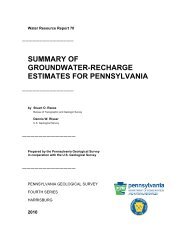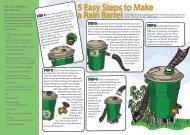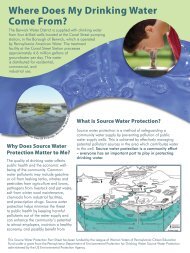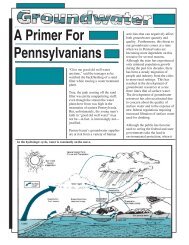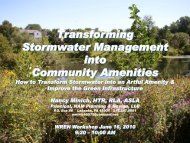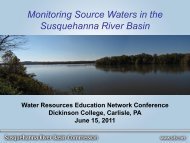NITROGEN POLLUTION: - Hubbard Brook Research Foundation
NITROGEN POLLUTION: - Hubbard Brook Research Foundation
NITROGEN POLLUTION: - Hubbard Brook Research Foundation
You also want an ePaper? Increase the reach of your titles
YUMPU automatically turns print PDFs into web optimized ePapers that Google loves.
The <strong>Hubbard</strong> <strong>Brook</strong> <strong>Research</strong> <strong>Foundation</strong> (HBRF) is a non-profit<br />
501(c)(3) charitable organization established in 1993. The mission of HBRF<br />
is to promote the understanding and stewardship of terrestrial and aquatic<br />
ecosystems through scientific research, long-term monitoring, and public<br />
education.<br />
HBRF works in partnership with the USDA Forest Service, major universities,<br />
and other institutions to support the <strong>Hubbard</strong> <strong>Brook</strong> Ecosystem Study (HBES) and<br />
develop new initiatives linking science and policy.<br />
The HBES is a long-term ecological research project in the White Mountains of New<br />
Hampshire. Established in 1963, the HBES first documented acid rain in North America and is<br />
one of the longest running and most comprehensive ecosystem studies in the world. The<br />
HBES is conducted at the <strong>Hubbard</strong> <strong>Brook</strong> Experimental Forest (HBEF), which was<br />
established in 1955 and is operated and maintained by the U.S. Forest Service Northeastern<br />
<strong>Research</strong> Station, United States Department of Agriculture.<br />
Through its Science Links TM program, HBRF develops strategies to integrate science and<br />
policy while preserving the independence and rigor of the HBES. The goal of Science Links<br />
is not to advocate particular policy outcomes, but to provide scientific information on the<br />
likely consequences of potential actions and to ensure that this information is timely, clear,<br />
and widely available.<br />
Suggested format for citing this report:<br />
Driscoll, C.T., et al. 2003. Nitrogen Pollution: From the Sources to the Sea. <strong>Hubbard</strong><br />
<strong>Brook</strong> <strong>Research</strong> <strong>Foundation</strong>. Science Links TM Publication. Vol. 1, no. 2.<br />
HBRF Science Links participants:<br />
Project Leader: Dr. Charles Driscoll, Syracuse University<br />
<strong>Research</strong> Fellow: Dr. David Whitall, <strong>Hubbard</strong> <strong>Brook</strong> <strong>Research</strong> <strong>Foundation</strong><br />
Dr. John Aber, University of New Hampshire<br />
Dr. Elizabeth Boyer, Syracuse University<br />
Dr. Mark Castro, UMCES Appalachian Laboratory<br />
Dr. Christopher Cronan, University of Maine<br />
Dr. Christy Goodale, Woods Hole <strong>Research</strong> Center<br />
Dr. Charles Hopkinson, Woods Hole Marine Biological Laboratory The Ecosystems Center<br />
Ms. Kathleen Fallon Lambert, <strong>Hubbard</strong> <strong>Brook</strong> <strong>Research</strong> <strong>Foundation</strong><br />
Dr. Greg Lawrence, U.S. Geological Survey<br />
Dr. Scott Ollinger, University of New Hampshire<br />
Project Advisors:<br />
F. Herbert Bormann – Yale University<br />
Rick Haeuber – U.S. Environmental Protection Agency, Clean Air Markets Division<br />
Debra Martin – U.S. Environmental Protection Agency<br />
David Shaw – New York Department of Environmental Conservation<br />
Paul Stacey – Connecticut Department of Environmental Protection<br />
The findings in this report do not necessarily represent the views of the advisors.<br />
For additional copies of this report:<br />
Please contact the <strong>Hubbard</strong> <strong>Brook</strong> <strong>Research</strong> <strong>Foundation</strong><br />
at hbrook@hbresearchfoundation.org or visit http://www.hubbardbrook.org<br />
PAGE 26



